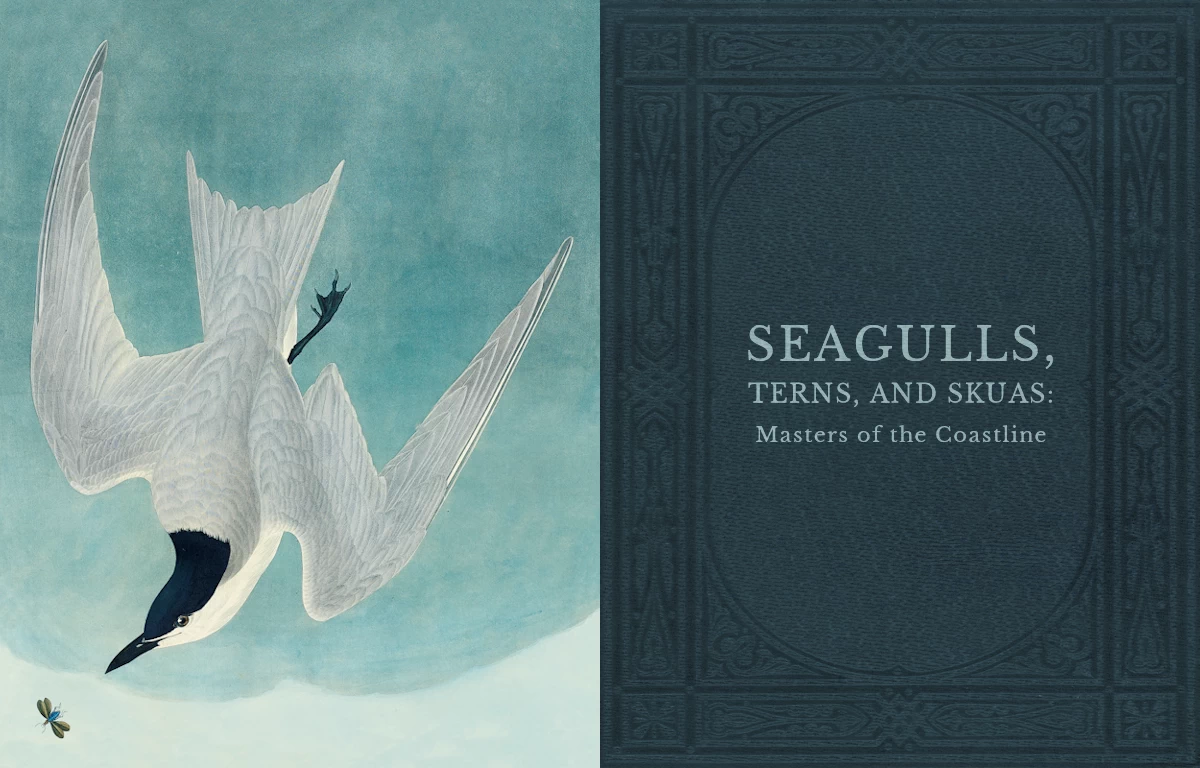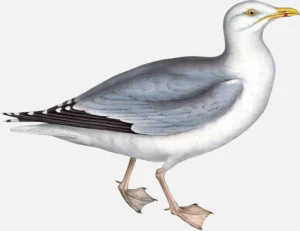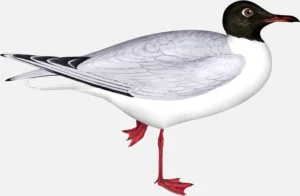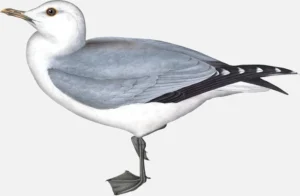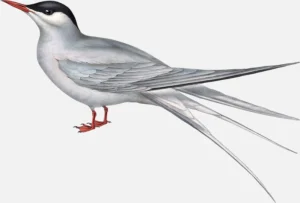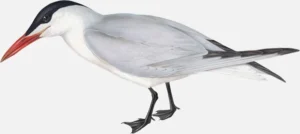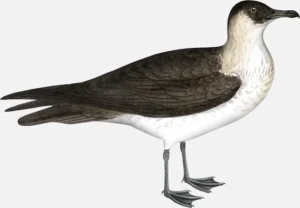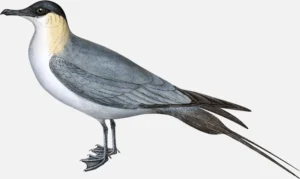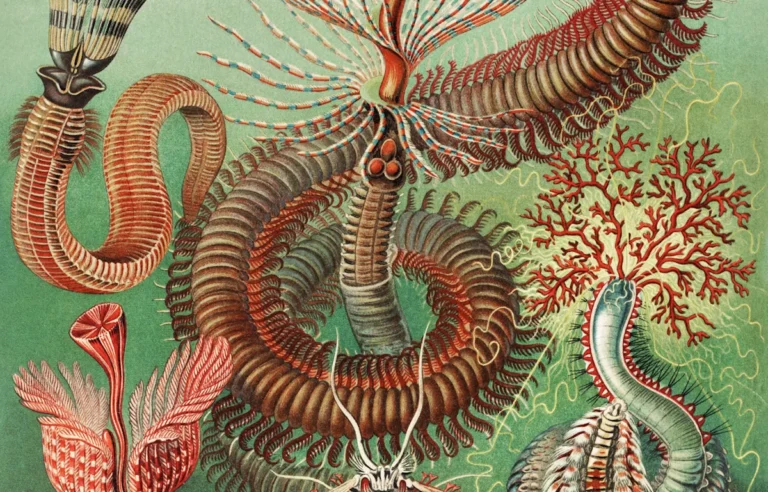Seagulls, Terns and Skuas: Masters of the Coastline
The world’s coastlines are buzzing with life, and one group of animals steals the spotlight: seabirds. Among the headliners are seagulls, terns, and skuas. These birds are the lively cast members in the great coastal drama, often spotted soaring through the sky, diving into the water, or chilling on rocks like they own the place. And sure, they might be eyeing your sandwich with a little too much interest, but they’re not just out for a free meal! These birds play crucial roles in keeping the coastal ecosystem in check. Let’s take a closer look at their fascinating lives and see how they’ve mastered life by the shore.
Seagulls: The Bold Survivors
Seagulls are like the rowdy beachgoers of the bird world. You’ll hear their loud, squawking calls and see their fearless swoops as they scout the shore. These birds aren’t shy about getting close to people—especially when snacks are involved! But behind their cheeky behavior, seagulls are surprisingly smart and resilient. These bold birds are experts at making a home just about anywhere, from bustling cities to quiet coastal nooks.
Herring Gull (Larus argentatus)
When most people think of a seagull, the Herring Gull comes to mind. With its sleek white body, gray wings, and black-tipped tail, it’s the quintessential beach bird. They’re often spotted patrolling sandy shores like lifeguards on duty. But Herring Gulls aren’t picky about where they hang out—they’ll also settle into cities, parking lots, and even rooftops.
These gulls are professional scavengers, ready to swoop down for fish, crabs, or—let’s be honest—your fries. They’ve even figured out how to crack open tough shellfish by flying high and dropping them onto rocks. Talk about resourceful! Herring Gulls are also fiercely protective of their nests, so watch out if you get too close. They aren’t afraid to dive-bomb anyone who threatens their young.
Beyond their beach antics, Herring Gulls play a key role in cleaning up coastal areas. They consume dead animals and leftover food waste, which helps keep the shoreline tidy. So, even though they may seem like sneaky snack thieves, they’re actually doing important environmental work.
Black-headed Gull (Chroicocephalus ridibundus)
The Black-headed Gull is a bit of a trickster when it comes to appearances. Despite its name, it doesn’t always have a black head. In the winter, its head turns white, but during breeding season, it sports a snazzy chocolate-brown cap. These gulls are smaller and more elegant than their Herring Gull cousins, and they’re often seen in graceful flocks near wetlands and estuaries.
Not just scavengers, Black-headed Gulls are skilled hunters, known for snatching insects mid-air and plucking fish from the water with remarkable precision. Their aerial acrobatics are like a ballet, twisting and turning through the air with ease.
When they’re not busy hunting, Black-headed Gulls are social birds that gather in large colonies during breeding season. Their loud calls and dynamic flying routines create quite the spectacle!
Common Gull (Larus canus)
The Common Gull, despite its name, is far from ordinary. This smaller, delicate species has a gray back, white underbelly, and a gentle yellow-green bill. They’re quieter and more reserved than the bolder Herring Gulls, preferring the peaceful surroundings of wetlands, farmlands, and grassy meadows over the chaos of crowded beaches.
Common Gulls may be shy, but they’re clever foragers. Their diet includes everything from insects to small fish, and they’ve even been known to munch on small mammals when the opportunity arises. These gulls are also incredibly graceful in flight, and during winter months, they form large flocks that put on dazzling aerial displays.
Interestingly, Common Gulls are known to take on leadership roles within their flocks, directing the movements of other birds during migration and feeding. Despite their understated appearance, these gulls are true team players.
Terns: The Swift Hunters of the Sky
Terns are the sleek, speedy sports cars of the seabird world. Built for speed and agility, they zip through the air like pros, their slender bodies and forked tails slicing through the sky. While gulls are content to scavenge, terns are all about the hunt. Fish is their main target, and watching one dive headfirst into the water for a meal is a spectacle you won’t want to miss.
Arctic Tern (Sterna paradisaea)
If there were a prize for long-distance travel, the Arctic Tern would win it, no question. This small, graceful bird migrates all the way from the Arctic to Antarctica and back every year—covering a jaw-dropping 25,000 miles annually! That’s the longest migration of any animal on Earth, which is like flying around the world… twice. These globetrotters are also top-notch hunters, using their sharp bills to pluck fish straight from the water.
Arctic Terns spend most of their lives in the air, only touching down to breed and rest. They’re also impressively long-lived, with some individuals reaching up to 30 years of age. That means an Arctic Tern might travel the distance to the moon and back over its lifetime!
Not only are Arctic Terns marvels of endurance, but they’re also fiercely protective of their nests. If you wander too close to their breeding grounds, you might just get a stern warning—a sharp peck from above!
Caspian Tern (Hydroprogne caspia)
The Caspian Tern is the heavyweight champion of the tern world. With its large size, striking red bill, and bold black cap, it’s impossible to miss. Found on every continent except Antarctica, this bird dominates coastlines, rivers, and lakes with its powerful hunting skills.
Caspian Terns are expert fishers, diving with incredible force to catch their prey. They’re also quite the noisy bunch, with harsh, loud calls that can be heard from afar. When they’re not hunting, they’re busy defending their nests from intruders, including other birds and predators.
Interestingly, Caspian Terns are known to form loose colonies where they raise their chicks together. Their fierce loyalty to their young and their group makes them one of the most social species of terns.
Skuas: The Fearsome Pirates of the Sea
If terns are the skilled hunters and gulls the opportunistic scavengers, then skuas are the swashbuckling pirates of the bird world. These aggressive seabirds are notorious for stealing food from others, using their size and speed to intimidate smaller birds. But don’t be fooled by their thieving ways—skuas are also skilled hunters when the mood strikes, capable of catching their own prey when necessary.
Pomarine Jaeger (Stercorarius pomarinus)
The Pomarine Jaeger is a true pirate of the skies. With broad wings and long, spoon-shaped tail feathers, this bird knows how to make an entrance. Pomarine Jaegers breed in the Arctic and migrate to warmer waters during the winter months, where they continue their plundering ways.
These birds are best known for their habit of chasing other birds, like terns and gulls, until they drop their catch. Once the unlucky victim lets go, the Pomarine Jaeger swoops in for the steal. It’s not the most honorable way to get a meal, but it’s effective!
But despite their reputation as food thieves, Pomarine Jaegers are capable hunters in their own right. When they’re not busy chasing other birds, they catch fish and small mammals with impressive skill.
Long-tailed Jaeger (Stercorarius longicaudus)
As the most graceful member of the skua family, the Long-tailed Jaeger is a sight to behold. With its sleek, elegant tail feathers trailing behind it, this bird is built for speed and agility. Like its relatives, it breeds in the Arctic tundra and heads south for the winter, spending its time in the open ocean.
Unlike its more aggressive cousins, the Long-tailed Jaeger prefers to catch its own food. Whether it’s fish, small mammals, or insects, this bird is a formidable hunter with a swift and precise flying technique. Long-tailed Jaegers are also known for their elegant courtship displays, which involve aerial acrobatics and graceful swoops.
The Coastal Conclave: Gulls, Terns, and Skuas
Seagulls, terns, and skuas may share the same coastal habitat, but they couldn’t be more different in personality and behavior. Gulls are the opportunists, always ready to grab the next meal, whether that’s fish, crabs, or your sandwich. Terns are the sleek, precise hunters, diving gracefully for fish. And skuas? Well, they’re the pirates, surviving through a mix of skill and intimidation, sometimes hunting, sometimes stealing.
But despite their differences, these birds are crucial to the coastal ecosystem. They help regulate fish populations, clean up dead animals, and even influence the behavior of other birds. Without them, the coastline would be a much different—and messier—place!
Why These Birds Matter
Sure, seagulls might seem like pesky beach companions, and terns and skuas might be spotted only from afar. But these seabirds are more than just background noise. Gulls clean up waste, while terns and skuas help manage fish populations and control other animals. Without their contributions, the delicate balance of coastal life would be completely thrown off.
So, next time you’re at the beach, keep an eye out for these coastal aviators. Whether they’re diving for fish or eyeing your lunch, seagulls, terns, and skuas are some of the most fascinating creatures you’ll find by the shore!


